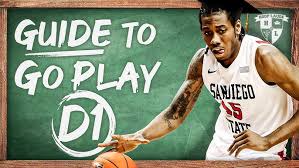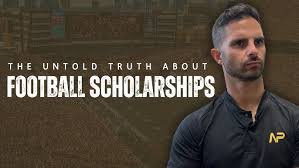For athletes, earning a scholarship can be the key to accessing higher education and pursuing a career in sports. One of the most sought-after types of financial aid are athletic scholarships, which can be offered by colleges and universities across the United States. Division I and II schools are two of the most competitive and prestigious levels of college athletics, and they offer a variety of athletic scholarships to talented students. If you’re an athlete aiming for college sports, it’s important to understand the nuances of these scholarships and how you can maximize your chances of receiving one.
Understanding Division I and II Schools
Before diving into athletic scholarships, it’s essential to understand the difference between Division I (D-I) and Division II (D-II) schools. These divisions are part of the National Collegiate Athletic Association (NCAA), which governs college sports in the United States.
Results
#1. What is your preferred work location?
#2. What is your current employment status?
#3. What type of work are you most interested in?
#4. What is your highest completed level of education?
#5. Which continent are you currently living in?
#6. What is your gender?
- Division I Schools: These schools are typically larger universities with the most competitive athletic programs. They offer the highest level of competition in college sports and often feature well-funded programs. D-I schools offer full scholarships that cover tuition, room and board, books, and fees. These schools compete at the highest level of college athletics and attract top talent from around the country.
- Division II Schools: D-II schools are often smaller universities or colleges that still have competitive athletic programs. These schools offer a balance between athletics and academics, allowing athletes to participate in high-level sports while still focusing on their education. Scholarships for D-II schools are typically partial, meaning they may cover a portion of the athlete’s expenses, but not all of them.
How Athletic Scholarships Work at Division I and II Schools
Athletic scholarships at both Division I and II schools are awarded based on an athlete’s talent and potential to contribute to the success of the school’s sports program. However, there are a few key differences between the two divisions in terms of scholarship offerings.
- Division I Scholarships: These schools offer full-ride scholarships, meaning the athlete’s entire tuition, fees, room and board, and sometimes even other expenses, are covered. D-I schools are highly competitive in terms of athletic performance and often recruit the best talent in the country. For most sports, there are a limited number of full-ride scholarships available, and the competition to earn one can be intense.
- Division II Scholarships: Unlike Division I, D-II schools offer partial scholarships, meaning the amount awarded may not cover the full cost of tuition, room, and board. Instead, athletes may receive partial financial aid to help with these expenses. The benefit of D-II athletic scholarships is that athletes are still able to compete at a high level while maintaining a better balance with academics, as D-II schools typically place a strong emphasis on both athletics and education.
Eligibility Requirements for Division I and II Scholarships
🎓 Must Read
To be eligible for an athletic scholarship at either a Division I or Division II school, athletes must meet specific criteria set forth by the NCAA. These requirements are designed to ensure that athletes are both academically and athletically capable of competing at the collegiate level.
- Academic Eligibility: In addition to athletic performance, student-athletes must meet certain academic standards to compete for a scholarship. NCAA Division I and II schools require athletes to maintain a certain GPA and meet standardized test score requirements (such as the SAT or ACT) for admission. It’s important for athletes to stay on top of their academic requirements, as failing to meet the necessary GPA or test scores can disqualify them from receiving a scholarship.
- Recruitment Process: Both D-I and D-II schools recruit athletes to compete for their teams. Recruitment can vary from one sport to another, but generally, coaches actively scout talent and reach out to athletes. Some athletes are recruited through high school and travel leagues, while others may be discovered through showcases and competitions. It’s crucial to build a strong athletic resume, demonstrate consistent performance, and get the attention of coaches early on.
- NCAA Clearinghouse: Athletes must register with the NCAA Eligibility Center, which ensures that they meet the academic and amateurism standards required to compete in college sports. This step is vital for both Division I and II athletes before they can officially sign with a college or university.
How to Increase Your Chances of Earning an Athletic Scholarship
Landing an athletic scholarship to a Division I or II school takes more than just talent on the field or court. Here are some ways to increase your chances of earning a scholarship:
- Be Visible: Coaches from Division I and II schools often look for talented athletes who stand out in their sport. One way to get noticed is by participating in camps, showcases, and tournaments where scouts and coaches are present. Having a highlight reel showcasing your best performances can also help you grab attention.
- Maintain High Academic Standards: While your athletic talent may be the reason you’re applying for a scholarship, your grades are just as important. Division I schools especially place a premium on student-athletes who excel both in the classroom and on the field. Maintaining good grades ensures that you meet the academic eligibility criteria and can make a strong case for why you deserve the scholarship.
- Network with Coaches: Take the initiative to reach out to coaches and express your interest in their programs. Send them your athletic resume, highlight videos, and information about your academic standing. Building relationships with coaches can significantly increase your chances of being considered for a scholarship.
- Keep Improving Your Skills: D-I and D-II athletes are often the best of the best, and your competition will be fierce. Constantly work on improving your skills, whether it’s through extra practice sessions, training with experienced coaches, or playing in competitive leagues. The better you are, the more likely you are to be awarded a scholarship.
- Research Schools and Programs: Not all schools are the same, and finding the right fit for your sport and academic goals is important. Research schools that offer strong programs in your sport, and see if they have a scholarship program that aligns with your needs. Also, check out what the school offers in terms of academic support for student-athletes, as this will play a big role in your overall experience.
Conclusion
Athletic scholarships for Division I and II schools provide athletes with the opportunity to pursue their academic and athletic goals without the burden of excessive student debt. Whether you’re aiming for a full-ride scholarship at a Division I school or a partial scholarship at a Division II school, the key to success is a combination of athletic talent, academic performance, and strategic planning.
By staying focused on both your athletic performance and your academic requirements, actively engaging with coaches, and exploring multiple scholarship opportunities, you can increase your chances of landing a scholarship that will help you achieve your dreams of playing at the collegiate level while earning your degree.









